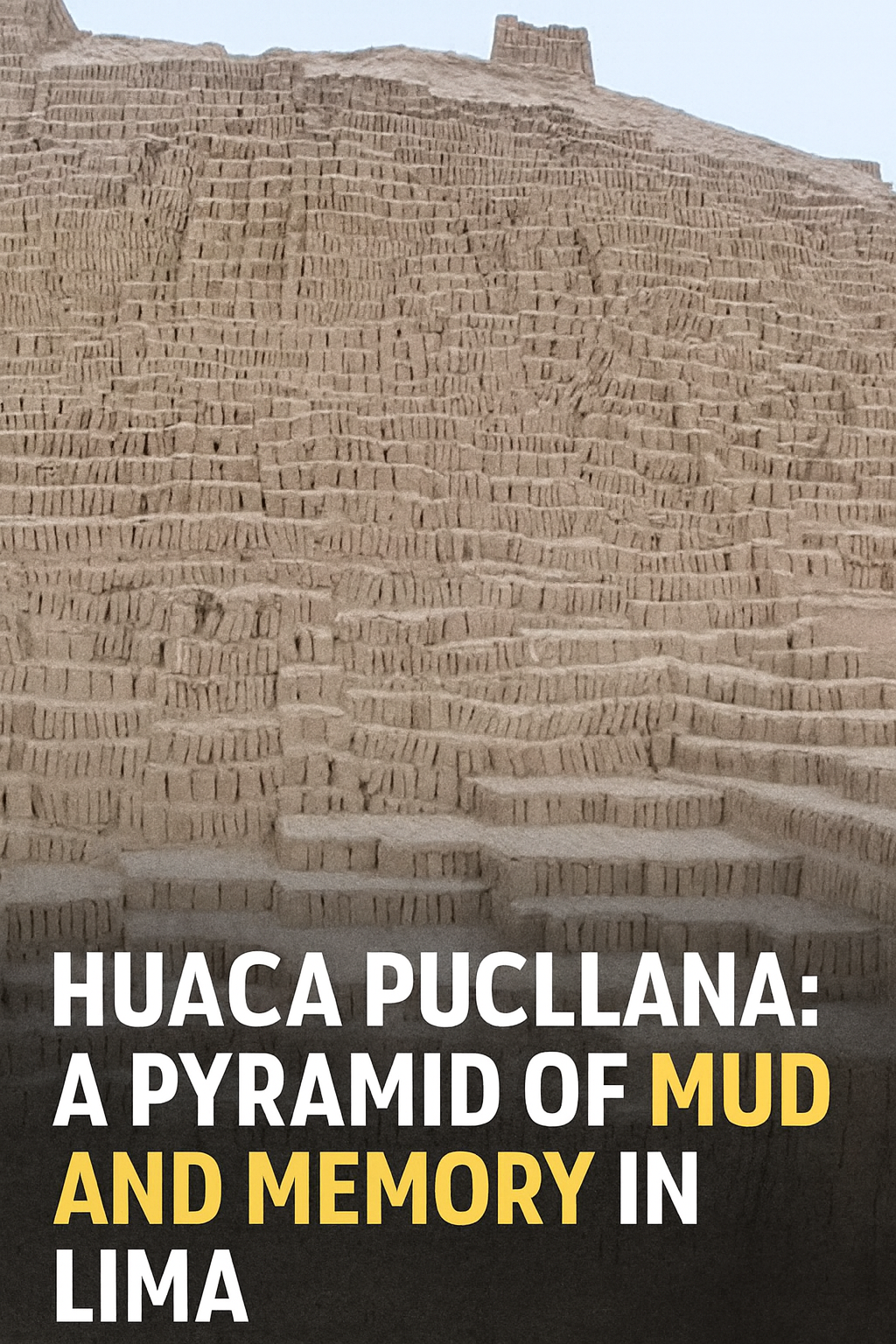
In the heart of Lima’s bustling Miraflores district, hemmed in by restaurants, boutiques, and high-rise apartments, there rises an unlikely mountain—a monument not of stone or steel, but of sunbaked mud. It is called Huaca Pucllana, and its presence is ghostly. Not because it hides in the shadows, but because it stands defiantly in the light, a timeworn echo of an ancient world cradled within a modern one.
Constructed over fifteen centuries ago by the Lima culture—an enigmatic coastal civilization that flourished long before the rise of the Inca—Huaca Pucllana is a 25-meter-high adobe pyramid built entirely by hand. Unlike the symmetrical perfection of Egyptian pyramids or the stonework of Mesoamerica, this pyramid seems to ripple and breathe. Its stepped platforms are composed of small adobe bricks, stacked vertically like books on a shelf, allowing the structure to bend with earthquakes rather than break. A genius born of necessity, and of an intimate understanding of both earth and tremor.
But Huaca Pucllana is more than a pile of ancient bricks. It is a whisper of the sacred. A vessel of memory. Archaeologists believe it once served as both a ceremonial center and an administrative hub for the Lima people, who organized their society around priesthood, agriculture, and astronomy. It was here that rituals were conducted—some to honor the sea, others to ensure the fertility of the land, and a few, more grimly, involving human sacrifice. Evidence of such rites has been found in burial sites nearby—offering clues into the rituals that once echoed through the pyramid’s dusty corridors.
In one grave, the remains of a young woman were unearthed, her bones carefully arranged, surrounded by fragments of ceramic vessels and weaving tools. She wasn’t just buried; she was honored, perhaps as a priestess or a chosen sacrifice. Around her, remnants of llama bones and marine life—fish, mollusks—suggested a culture deeply tied to both the mountains and the sea. Her silent skeleton tells a story modern tongues can only guess at, yet it radiates a quiet dignity, as if her spirit still watches over the site.
What makes Huaca Pucllana even more haunting is how it refused to be erased. When the Spanish conquistadors arrived in the 16th century, they destroyed or repurposed many indigenous religious sites, building churches atop sacred temples. But Huaca Pucllana, covered in centuries of dust and forgotten by time, lay hidden in plain sight. For hundreds of years, the local population didn’t even recognize it as a manmade structure. They thought it was just another hill, and so they built roads and houses around it, unknowingly preserving it.
It wasn’t until the 20th century that archaeologists began to seriously excavate the site. And even then, Huaca Pucllana was stubborn. Its layered bricks, each marked by the fingers that formed them, had weathered centuries of storms, earthquakes, and human indifference. Yet they held together, clinging to the stories etched into every crevice.
In the late 1980s, a major excavation revealed new layers of the complex—courtyards, altars, storage rooms, and even traces of paint on the walls. Imagine that: this seemingly colorless pyramid once shimmered with reds and yellows, reflecting a vivid cultural life. It was alive with rhythm—ceremonial chants, the soft thud of sandals on adobe, the whispered prayers to gods long forgotten. One can almost hear the rush of wind through feathers on a headdress, the scrape of shells sewn into garments.
Today, Huaca Pucllana stands as both a relic and a contradiction. As visitors walk its winding paths, they are not just witnessing the past—they are stepping into a dialogue between eras. Tour guides speak of its construction and mysteries while traffic blares just outside the walls. Nearby, Lima’s modern skyline glints in the sun, looming over the ancient clay like a future watching its past.
And yet, something intangible remains unbroken. There is a kind of reverence that blankets the site. Perhaps it is the humility of knowing that human hands once molded thousands—millions—of bricks from nothing more than earth and water. Or perhaps it’s the realization that civilizations rise, fall, and sometimes, if they are patient enough, rise again in memory.
Children on school trips often ask: why is it still here? The answer is as poetic as it is practical. Because it was made not to dominate the landscape, but to listen to it. The Lima people did not fight the elements—they worked with them. Huaca Pucllana is a pyramid of patience, of rhythm, of balance. A monument to coexistence.
It has also become a space of rediscovery for the people of Lima themselves. Once disregarded, even built over, the pyramid now commands respect. It is lit beautifully at night, hosts cultural events, and even shares space with a restaurant that serves pre-Columbian-inspired cuisine—blending past and present not just in sight, but in taste. Tourists come, yes, but so do locals. Some come to learn, others to reconnect. And some, perhaps unknowingly, come to remember.
Because Huaca Pucllana is not just about the past—it’s about the persistence of memory. About the quiet resilience of a culture that refused to be forgotten. And about the ways in which ancient stories can rise again, one brick at a time, from the very soil beneath our feet.
In a city of nearly 10 million people, one mud-brick pyramid endures—not because it must, but because it still has something to say.
What might we hear, if we chose to listen?
And more importantly: what lessons still lie buried, waiting for the patient hands of a new generation to unearth them?


